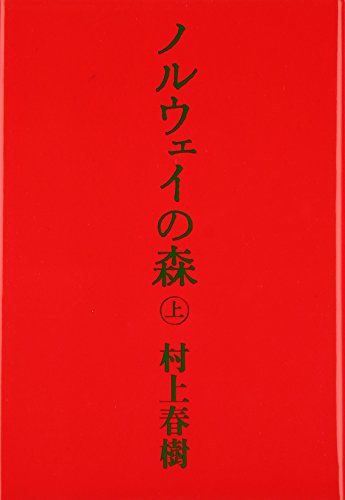
Learn Japanese by Reading: 22 Reading Suggestions for Eager Students
Have you ever had that experience where you understand every single kanji and vocabulary word, but have no idea what any of it means, even when doing something simple like reading a menu?
I remember I had this experience when I sat under our 炬燵 (こたつ) — kotatsu (a small heated table used in winter that’s absolutely heavenly). I began reading after one year of Japanese—and understood practically none of what I read.
Luckily, I’ve managed to overcome this plateau using the nifty resources below.
Contents
- 1. Japanese Graded Readers (White Rabbit Press)
- 2. 10 分で読めるお話し( じゅっぷんで よめる おはなし )— “Readable in 10 Minutes”
- 3. Satori Reader
- 4. NHK Easy News
- 5. Wasabi
- 6. “Read Real Japanese: All You Need to Enjoy Eight Contemporary Writers”
- 7. “Read Real Japanese: Fiction”
- 8. キノの旅( きの の たび ) — “Kino’s Journey” by Keiichi Sigsawa
- 9. Zoo 1( ずー いち )— “Zoo 1” by Otsuichi
- 10. 失はれる物語 ( うしなわれる ものがたり )— “A Tale of Being Left Behind” by Otsuichi
- 11. 暗黒童話( あんこくどうわ )— “Black Fairy Tale” by Otsuichi
- 12. キッチン( きっちん )— “Kitchen” by Banana Yoshimoto
- 13. 死神の精度( しにがみ の せいど )— “Accuracy of Death” by Kōtarō Isaka
- 14. 女のいない男たち( おんなの いない おとこたち )— “Men Without Women” by Haruki Murakami
- 15. 羅生門( らしょうもん )— “Rashōmon” by Akutagawa Ryūnosuke
- 16. 高瀬舟( たかせぶね )— “Takasebune” by Mori Ōgai
- 17. 夢十夜( ゆめじゅうや )— “Ten Nights of Dreams” by Natsume Sōseki
- 18. アナザー( あなざー )— “Another” by Yukito Ayatsuji
- 19. 新世界より( しんせかいより )— “From the New World” by Yusuke Kishi
- 20. オーバーロード( おーばーろーど )— “Overlord” by Kugene Maruyama
- 21. 重力ピエロ( じゅうりょく ぴえろ )— “A Pierrot” by Kōtarō Isaka
- 22. ノルウェイの森( のるうぇい の もり )— “Norwegian Wood” by Haruki Murakami
- How to Learn Japanese by Reading
- And One More Thing...
Download: This blog post is available as a convenient and portable PDF that you can take anywhere. Click here to get a copy. (Download)
1. Japanese Graded Readers (White Rabbit Press)
The best way to start to learn Japanese by reading is through graded readers.
The White Rabbit ones in particular are excellent (though they’ll definitely burn a hole through your bank account). If you happen to be in Japan, try looking for the physical books in a nearby university library.
White Rabbit readers target specific JLPT levels and have content for N5, N4, N3 and N2. This organization makes things really simple: Start at N5, and work your way up as you cover relevant grammar points through your main means of study.
You can also download their app to your iOS or Android device.
2. 10 分で読めるお話し( じゅっぷんで よめる おはなし )— “Readable in 10 Minutes”
This series is another excellent choice if you’d like a cheaper option and have access to Amazon.jp. The books are aimed at Japanese kids learning to read.
Start at year one, and work your way up. Japanese kids don’t learn their language in JLPT order, of course, but the books do start simple and become progressively more difficult.
True to its name, it’s a collection of stories that can be read within a few minutes—perfect for sneaking in some Japanese reading practice whenever you manage to get a break from your busy schedule.
3. Satori Reader
If Japan is out of your reach, or you’d like something you can access online, check this one out.
The cool thing about Satori Reader is how personal it is. There are tons of articles written for different difficulty levels, and the site will suggest things for you to read based on your interest and ability.
And if the extensive features aren’t doing it for you, you can also reach out to their dedicated community of fellow learners for help. Neat!
4. NHK Easy News
If you’d like to save money, NHK Easy News is a solid resource. Just as the title suggests, it’s real news written in simple Japanese.
Each article features a recording of a native speaker, keywords that can be moused over for a simple Japanese explanation and the ability to toggle furigana.
After reading a simplified article, you can follow a link to the original (right below the simplified article), and try to understand it on your own.
5. Wasabi
Love fairy tales from inside and outside of Japan? Wasabi features classic children’s stories divided into five to 10 lessons each.
Each lesson features four audio files of the stories read at various speeds. There’s also a text with furigana which you can use to follow along with the audio (if you’re at the lower levels). Finally, there’s a vocabulary list for some of the more difficult words throughout the story.
And if you’d like to try your hand at translating these stories, there are English translations included so you can check how well you understood each tale.
6. “Read Real Japanese: All You Need to Enjoy Eight Contemporary Writers”
This book contains essays from some of the most well-known Japanese writers, such as Banana Yoshimoto, Haruki Murakami and Ryuichi Sakamoto.
The format is straightforward: The right-hand pages contain text that (aside from furigana the first time that a given kanji appears) is the same Japanese that someone with the original book would read.
The left-hand pages are an English glossary and grammar dictionary that provides hints and elucidates unclear parts, but doesn’t give too much away. Sentence by sentence, every bit of grammar that isn’t completely rudimentary gets explained.
7. “Read Real Japanese: Fiction”
This is basically the fiction counterpart of the last book I just talked about, so it follows a similar format.
There’s also some overlap in the authors featured here (e.g., Banana Yoshimoto).
Both of these “Read Real Japanese” books are like training wheels for reading in Japanese. They expose you to all of the critical concepts you need to know to transition into reading real books and explains them in a straightforward way.
If you have difficulty moving on during a later stage or need a bit more practice, then come back to these for a boost! Really, these books are your best friends.
8. キノの旅( きの の たび ) — “Kino’s Journey” by Keiichi Sigsawa
These philosophical books follow the stories of Kino as she rides her motorcycle through fictional foreign countries. Each story can give you insights about life and might change how you see the world.
Specifically, they make you ask questions like “What if people lived under a government that possesses a specific quality—and takes that quality to the extreme?”.
The stories are good first reads, because the plot of each tale is structurally similar. Getting through one will help you know what to expect in the others.
And if you enjoy these, there’s also an anime series based on these books by Keiichi Sigsawa.
9. Zoo 1( ずー いち )— “Zoo 1” by Otsuichi
If horror is more your style, then you might enjoy “Zoo 1” by Otsuichi. Actually, even if you’re not a horror fan, the genre is a great one for beginners. After all, scary stories are still frightening even if the language used isn’t very complex.
Despite the title, this book isn’t about animals at all. It’s actually a collection of stories—each with their own brand of horror.
If you’re reading something for the purpose of a spook or twist, then Otsuichi is your man—and he just happens to be great for finding your feet in Japanese.
Once you’re done with this book, you can move on to its aptly-named sequel “Zoo 2.”
10. 失はれる物語 ( うしなわれる ものがたり )— “A Tale of Being Left Behind” by Otsuichi
This is also by Otsuichi, the horror author I just introduced. If you didn’t read him last time because you don’t like horror, the stories in this compilation should be more appetizing to you. They’re more bizarre than scary, and many of them pull right on the heartstrings.
This is a solid second read, especially if you began with “Zoo.” The stories are written in a similar language, but they’re notably longer.
Oh, and did I mention that cover is absolutely gorgeous? It’s something I wouldn’t hesitate to display on my coffee table.
11. 暗黒童話( あんこくどうわ )— “Black Fairy Tale” by Otsuichi
Since I’ve already suggested two books by Otsuichi, sharing a full-length story of his seems like a logical thing to do.
After all, reading a lot of one author means you get used to their style of writing. The words on the page might be different, but they’re likely being used in similar ways to the author’s other works.
This is a two-part story. What sort of connection could there be between a talking crow who steals people’s eyes and the missing girl who’s sought by a boy elsewhere in Japan?
If you like story premises that make you go “Huh? That’s so weird—but in a way that makes me want to know more!”, this should definitely be on your “To Read” list.
12. キッチン( きっちん )— “Kitchen” by Banana Yoshimoto
This operates at a completely different pace and deals with the lessons a girl named Mikage (who holds a striking affection for kitchens) learns about love and life. Full of quirky characters and lots of growth, this story deals with the concepts of identity, family and death.
キッチン is more difficult than 暗黒童話, so if you plan to read both books, read this one second.
That said, if you’re interested in works about women in Japan, I highly recommend anything by Banana Yoshimoto. Her characters feel like people you’d actually meet in real life—with a generous sprinkling of quirks.
13. 死神の精度( しにがみ の せいど )— “Accuracy of Death” by Kōtarō Isaka
This is a quirky book by Kōtarō Isaka, where 死神 (しにがみ) — gods of death are just not-quite-supernatural サラリーマン (さらりーまん) — salarymen who are out doing their jobs. Each 死神 is assigned to a particular person for a fixed period of time and is put in exactly the right situation and body necessary to connect with said person.
I know that we’re just here to learn Japanese by reading, but this is actually a fantastic book to read overall! Every story features a twist, and the twists are incredible. No matter how hard you try, you won’t see them coming—which I think is the mark of a great writer.
14. 女のいない男たち( おんなの いない おとこたち )— “Men Without Women” by Haruki Murakami
You can’t discuss contemporary Japanese literature without bringing up Haruki Murakami. Love him or hate him, you can’t help but appreciate the way he writes. I read Murakami just to experience the way that he puts words together—something Japanese learners will find useful in their studies.
True to the title, all of the stories here are of men who, for one reason or another, either lost or just don’t have a woman in their lives.
In fact, one of the short stories was adapted into a 2021 film called ドライブ・マイ・カー (どらいぶ・まい・かー) — “Drive My Car.”
15. 羅生門( らしょうもん )— “Rashōmon” by Akutagawa Ryūnosuke
This book tells a story that takes place near a special set of gates in old Kyoto. A man considering theft sees a woman robbing hair from corpses. What can possibly happen next?
It’s arguably the codifier of the “unreliable narrator” trope. Unless the story is from the third person omniscient point of view (POV), a story is usually often told (or viewed) from the POV of one character. But what if that POV contradicts another character’s POV? What if multiple characters have conflicting POVs? That’s the central premise of this book.
Incidentally, the book title lends its name to a 1950 film starring Toshiro Mifune, which has a very different story but uses the same “unreliable narrator” premise. Also, the author lends his name to one of Japan’s most prestigious literary prizes.
16. 高瀬舟( たかせぶね )— “Takasebune” by Mori Ōgai
This is the story of a boat guard rowing a supposed criminal to an island prison. The man, however, seems incredibly polite and unlike any of the other prisoners the guard has rowed with, which unsettles the latter. Read this one to find out what brings this soft-spoken man to the prison.
Also, the author, Mori Ōgai, is considered one of the pioneers of modern Japanese literature (meaning literature from the late 1800s to the early 1900s).
I’d also recommend 雁 ( がん ) — “The Wild Geese.” It’s probably Mori’s most well-known work, which was made into a 1953 film of the same name.
17. 夢十夜( ゆめじゅうや )— “Ten Nights of Dreams” by Natsume Sōseki
This story was described to me by one of my literature professors as being a “diamond of Japanese literature.” Written by Natsume Sōseki, one of Japan’s most famous writers, this is a compilation of 10 surreal and fantastic dreams. The book is a journey you just have to take.
Once you’re done with this short story collection, you can read his other work, 吾輩は猫である ( わがはいはねこである ) — “I am a Cat”. Even if you’re not a cat lover, you’ll surely enjoy the searing satire packed into the pages of this book.
18. アナザー( あなざー )— “Another” by Yukito Ayatsuji
This work by Yukito Ayatsuji features a boy who’s just moved to a new town and school. But something doesn’t seem quite right: Nobody talks to a girl named Misaki Mei, treating her as though she doesn’t exist. Despite warnings, he approaches the girl, unknowingly cursing his fellow students, who begin dying gruesome deaths one by one. (There’s an anime for this one, too!)
If you particularly enjoyed the mystery aspect of this novel, check out 十角館の殺人 ( じゅかくかんのさつじん ) — “The Decagon House Murders” as well. There’s a good reason (or rather, plenty of good reasons) it’s a cult classic. And because it’s a mystery, I can’t adequately summarize the plot without giving away the main twists. You have to discover those for yourself!
19. 新世界より( しんせかいより )— “From the New World” by Yusuke Kishi
Looking for a Japanese post-apocalyptic dystopian novel? This one imagines a world where every human on Earth now possesses telekinesis. (That’s such a cool power, by the way. Imagine being able to lift heavy furniture on your own sans adrenaline without breaking a sweat!) Everything seems hunky-dory—until a group of young friends discover that not all is as it seems.
Like “Another,” “From the New World” also has an anime adaptation. I love how the promotional poster makes it look as though this is going to be a cute, lighthearted work, when it’s anything but.
In case Yusuke Kishi’s name rings a bell, that’s probably because he also authored クリムゾンの迷宮 ( くりむぞんのめいきゅう ) — “The Crimson Labyrinth”, which was his first novel that got released in America.
20. オーバーロード( おーばーろーど )— “Overlord” by Kugene Maruyama
This is an example of a work in the 異世界 (いせかい) — isekai genre. In 異世界, the main character is usually an ordinary person who somehow ends up in a different world, hence the name which literally means “another world.”
What makes this one different is that the main character’s reality is a dystopian version of our world—and then he gets transported into a different reality via a video game. You’ll find plenty of light novels in this particular genre, so if you enjoyed “Overlord,” you won’t have a shortage of additional material to choose from.
21. 重力ピエロ( じゅうりょく ぴえろ )— “A Pierrot” by Kōtarō Isaka
Kōtarō Isaka is known for his twists, and this novel doesn’t disappoint. It follows a pair of brothers who become intrigued by a series of arson cases. As the two get closer to unraveling the mystery, they learn more about their family and each other.
The reason I put this a bit farther down the list is that, unlike 死神の精度, this is a full-blown work. Once you get used to Isaka’s writing style in his shorter works, you might find it easier to dive into his longer tales.
Most importantly, don’t forget to enjoy the twists and turns in this book. After all, the whole reason you’re practicing reading in Japanese in the first place is because you want to read materials in their original language in authentic contexts.
22. ノルウェイの森( のるうぇい の もり )— “Norwegian Wood” by Haruki Murakami
This is the work that brought Murakami to fame in Japan, a fact that I think makes it worthy of being included on this list. It’s a story of loss, identity and sexuality, themes explored as the main character falls in love with another woman while already being in a relationship.
Norwegian Wood ends with the main character being asked “where are you now?”—a question I’d also like to direct to you as we’re nearing the end of this article.
And hey, maybe this might be the book that would convert you into a Murakami fan!
How to Learn Japanese by Reading
There are many ways to approach reading in Japanese, depending on what you need from a specific text.
However, there are a few general tips you can follow:
- If you’re having some issues approaching your first book, you could always build up your vocabulary and grammar first through other methods, such as reading and following along with subtitles on videos. A program like FluentU can be a good resource for seeing the language spoken and written in subtitled videos.
FluentU takes authentic videos—like music videos, movie trailers, news and inspiring talks—and turns them into personalized language learning lessons.
You can try FluentU for free for 2 weeks. Check out the website or download the iOS app or Android app.
P.S. Click here to take advantage of our current sale! (Expires at the end of this month.)

- Consider reading with a notebook on hand. This way, you can write down unfamiliar grammar, useful phrases and idioms or even just sentences with words you’d like to remember. Make a point to use these phrases when you meet with your language exchange partner. Add useful new things to a flashcard deck for further learning—a strategy called sentence mining.
- Read short stories intensively. Intensive reading involves putting a lot of effort into understanding a difficult text over a shorter period. With short stories, you can untangle complicated sentences and look up any words you don’t know. After each story (unless it’s way below your level), you should have a concrete list of things you can express after reading but couldn’t before.
- Read longer books like novels extensively. Extensive reading, on the other hand, involves spending a longer period reading something that doesn’t take as much effort. So with novels, don’t stress too much about knowing the book inside and out. It’s okay to only get “he was sitting under a tree” from a sentence that actually says “he was sitting all by his lonesome under the shade of a sagging willow tree.” The second sentence might be longer, but its core idea hasn’t really changed.
- Start with a digital reading tool. A digital reading tool like Kindle or Kobo basically takes away the hurdle of checking vocabulary, which is an advantage I can’t overstate. The ability to simply highlight a word and have a dictionary reference pop up saves an incredible amount of time compared to having to manually look up characters. All the time saved means you can learn Japanese by reading with fewer interruptions, which means that it’s more enjoyable—and that you’ll be more likely to read more!
At this point, you’ve made an incredible journey, but where do you go from here? Will you begin exploring other works by these authors, return to the Meiji era or turn to more academic Japanese?
These books were as much a journey of independence as they were of literacy. I hope that, by now, you’ve got everything it takes to choose a direction and begin exploring your own world—in Japanese, of course.
Download: This blog post is available as a convenient and portable PDF that you can take anywhere. Click here to get a copy. (Download)
And One More Thing...
If you love learning Japanese with authentic materials, then I should also tell you more about FluentU.
FluentU naturally and gradually eases you into learning Japanese language and culture. You'll learn real Japanese as it's spoken in real life.
FluentU has a broad range of contemporary videos as you'll see below:

FluentU makes these native Japanese videos approachable through interactive transcripts. Tap on any word to look it up instantly.

All definitions have multiple examples, and they're written for Japanese learners like you. Tap to add words you'd like to review to a vocab list.

And FluentU has a learn mode which turns every video into a language learning lesson. You can always swipe left or right to see more examples.

The best part? FluentU keeps track of your vocabulary, and gives you extra practice with difficult words. It'll even remind you when it’s time to review what you’ve learned. You'll have a 100% personalized experience.
Start using the FluentU website on your computer or tablet or, better yet, download the FluentU app from the iTunes or Google Play store. Click here to take advantage of our current sale! (Expires at the end of this month.)









![Ushinawareru monogatari [Japanese Edition] Ushinawareru monogatari [Japanese Edition]](https://m.media-amazon.com/images/I/51EI4gXs4AL._SL500_.jpg)


![Accuracy of Death [In Japanese Language] Accuracy of Death [In Japanese Language]](https://m.media-amazon.com/images/I/51S89owcFUL.jpg)



![Two hen Ten Nights of other dream (Soseki literature collection 4) (1990) ISBN: 4000090046 [Japanese Import] Two hen Ten Nights of other dream (Soseki literature collection 4) (1990) ISBN: 4000090046 [Japanese Import]](https://m.media-amazon.com/images/I/51HuRW22+IL._SL500_.jpg)

![新世界より[ Shinsekai Yori] Vol. 1 新世界より[ Shinsekai Yori] Vol. 1](https://m.media-amazon.com/images/I/51Bw-+3HzgL._SL500_.jpg)

![A Pierrot [In Japanese Language] A Pierrot [In Japanese Language]](https://m.media-amazon.com/images/I/51PA367G3ML._SL500_.jpg)



